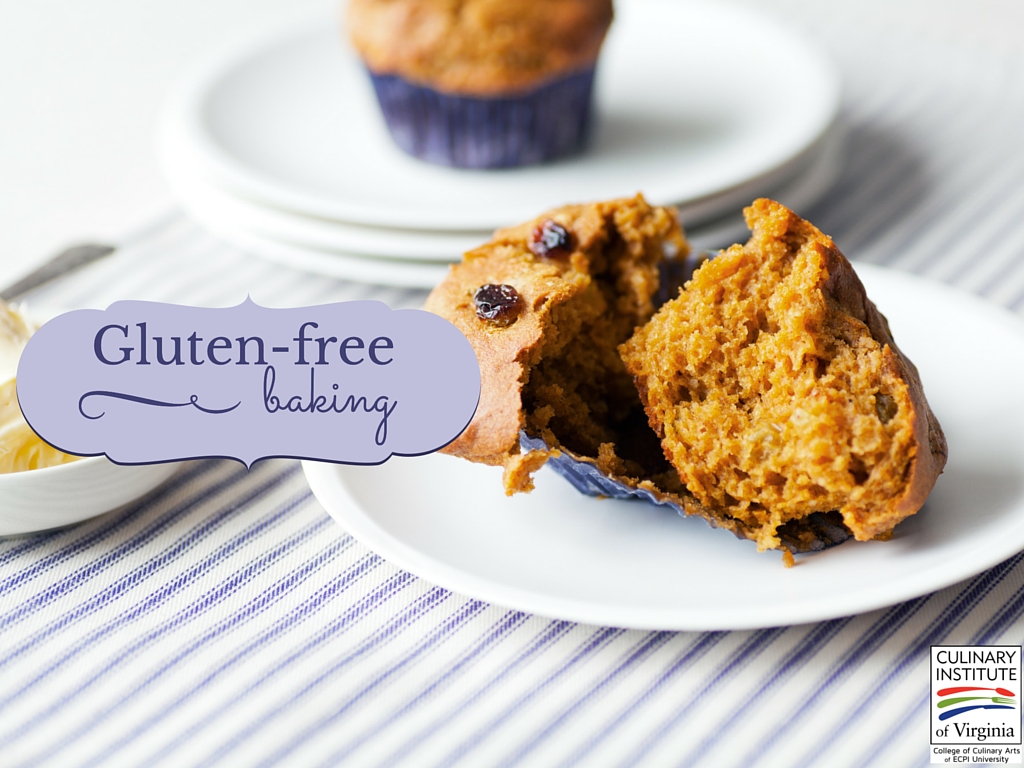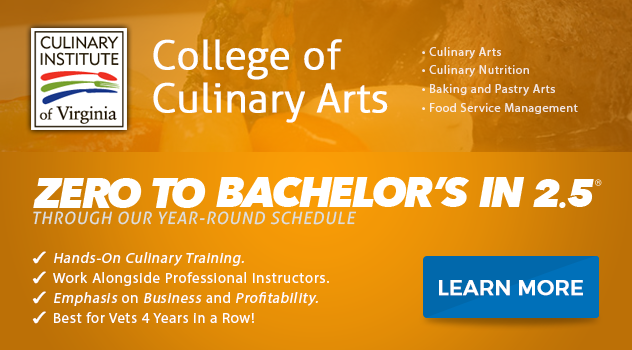
Gluten-free Baking for Health-conscious Baking & Pastry Chefs
In the words of comedian John Pinette, "What has gluten in it? Everything! Every reason to wake up in the morning." The challenge for a top-notch, health-conscious baking and pastry chef is to address the genuine need for gluten-free foods while still giving folks plenty of reason to get up in the morning. Everything from our daily bread to decadent pastries has gluten in it, and yet trained professional chefs can produce wonderful, gluten-free delights. Those in the know can make plenty of dough.
What is Gluten?
"I don't know what gluten is," said Pinette in one of his famous routines, "but apparently it's delicious, and you need to put that back in there." Gluten appears wherever wheat, triticale, rye or barley appears, because it is a protein chemically created when glutenin and gliadin molecules bond. That molecular bond gives bread and pizza dough their famous*and tasty*elasticity. Gluten also traps carbon dioxide (given off by hungry yeast) and makes bread rise.
Gluten gives bread its characteristic texture and helps it hold shapes. Gluten-free donuts, for example, are difficult to make because gluten helps donut dough hold the hole. People who eat dozens of donuts are gluttons for gluten.
The Real Problem: Not Enough Gluten-free Food
Knowing what gluten is, though, is not enough for a professional pastry chef or baker. Wheat, rye, triticale and barley are popular grains used in baked goods, but a properly trained baker can find ways around the gluten dilemma. What dilemma? Some people cannot eat gluten, and many more choose not to.
Celiac disease is a medical condition that genuinely affects about one percent of the whole population (all seven billion of us, not just those in developed countries). For celiac sufferers, consuming gluten leads to discomfort in the small intestine. The discomfort comes from the body's own defense against a perceived attack on the immune system. The tiny villi (little finger-like structures) in the small intestine are damaged. Those villi are the way your body absorbs nutrients from food, so damaging them leads to malnutrition and other digestive problems. Solution: eat gluten-free foods. Problem: finding enough gluten-free food to eat.
Career Paths for Competent Bakers
In addition to the relatively small number of people who cannot eat gluten for medical reasons, many people opt not to eat gluten for other reasons, some supported by science and some simply fads. Fads translate to profits, though. Part of service industry work is catering to those fads.
A well-trained pastry chef or baker can pivot and react to trends and fads so that last year's cupcake frenzy yields to this year's gluten-free gourmet grain yields to next year's pesto-potato pancake potpourri.
Proper training in baking and pastry arts, including gluten-free baking, can lead to many possible career paths, according to the Bureau of Labor Statistics (BLS):
- Bakeries
- Tortilla manufacturers
- Restaurants
- Hospitals
- School cafeterias
- Senior centers
- Grocery stores
Become a gluten-free pastry chef and substitute your ho-hum job with an exciting career that benefits people and provides tasty treats.
Gluten-Free Baking Substitutes
A professional, health-conscious baker is challenged to develop tasty recipes without using gluten's important properties that bind dough together. The most popular answer is to substitute pseudo-cereals for wheat, triticale, rye or barley:
- Amaranth: A South American plant high in protein, fiber and iron, with a peppery flavor
- Buckwheat: Bitter-flavored, nutrient-rich, and usually combined with more flavorful ingredients
- Flax: High-fiber, nutty flavored flax gives a spongy texture to baked goods
- Millet: The delicate, sweet flavor of millet is useful in muffins and flatbreads
- Quinoa: Avoid embarrassment; learn to say "keen-wha"Â to describe this mild, nut-flavored South American ingredient
- Teff: This African grass is a good thickener
Gluten-free baking depends on substituting one ingredient for another, often in combination, to provide the binding, rising, and fluffiness expected in baked goods. Health-conscious bakers and pastry chefs learn to substitute these ingredients easily, but if you are new to the process, we can begin with a few basics:
Replace with:
- Grains = Pseudo-cereals
- Binder = Eggs, xanthan gum or guar gum
- ¼ cup flour = ¼ ground flaxseeds and ¼ cup water
- Milk = Evaporated milk
- White sugar = Brown sugar
- Trial-and-error = Education
Baking and pastry (@ Culinary Institute of Virginia - ECPI University School of Culinary Arts) http://t.co/SnVWvc1V
-Katie Reams (@kataytastic) March 8, 2012
Learn the Complex Art of Baking
To learn gluten-free baking, you can throw things together in the kitchen and hope to find the right combination of ingredients. Or you can contact ECPI University to learn about the Culinary Institute of Virginia (CIV). At CIV, you can earn a diploma in Baking and Pastry Arts in only 40 weeks. Classwork includes principles of baking, alternative baking (including gluten-free), nutrition and more. There is no substitute for finding your passion, so contact us today. It could be the Best Decision You Ever Make!
DISCLAIMER - ECPI University makes no claim, warranty or guarantee as to actual employability or earning potential to current, past or future students or graduates of any educational program we offer. The ECPI University website is published for informational purposes only. Every effort is made to ensure the accuracy of information contained on the ECPI.edu domain; however, no warranty of accuracy is made. No contractual rights, either expressed or implied, are created by its content.
For more information about ECPI University or any of our programs click here: http://www.ecpi.edu/ or http://ow.ly/Ca1ya.


